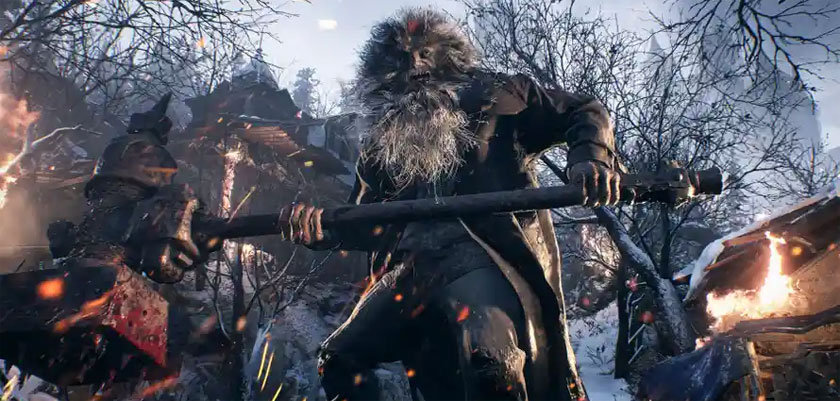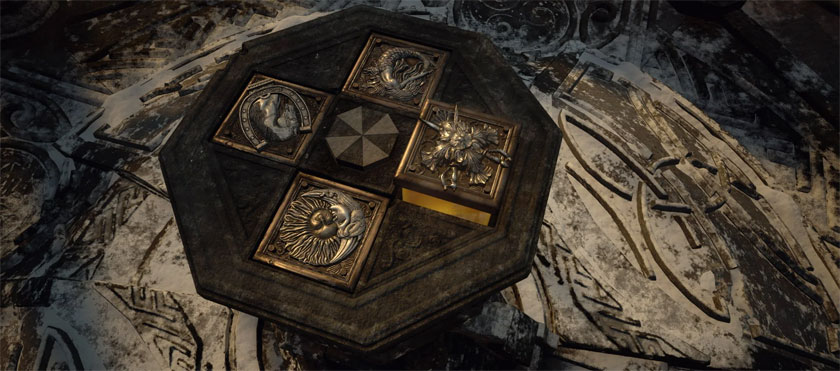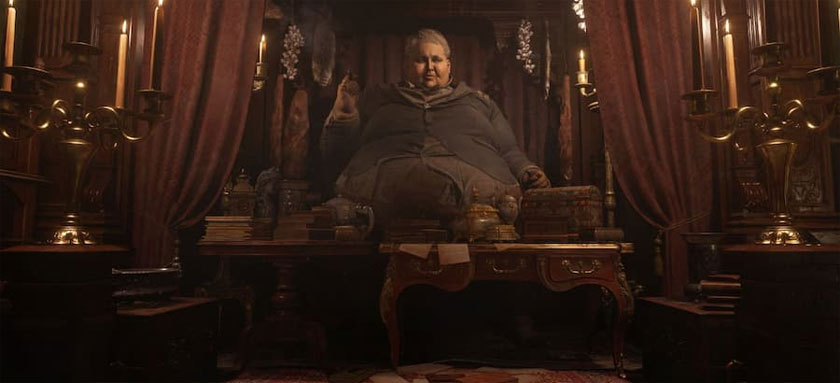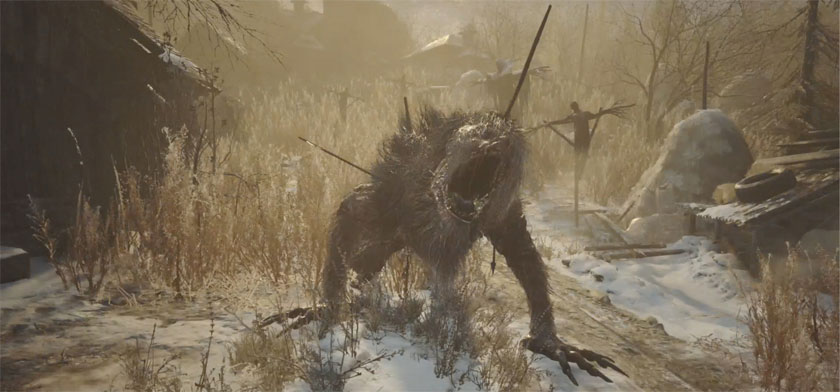Resident Evil Village Is Probably My Game of the Year

Resident Evil Village is a different kind of mostly great. That was the planned title for my essay right after I beat the game. Then I immediately jumped back in for another playthrough. Then a third. The only reason I haven’t dove in for a fourth playthrough is so I don’t burn myself out on the game. So while I originally planned to be “clever” and reference the title of my Resident Evil VII write-up, I’ve found that doing so would fail to illustrate just how much I’ve fallen in love with Village.
It certainly is a different kind of mostly great from its predecessor, and depending on your tastes it may even be worse. If Resident Evil VII was a course correction for the franchise, Resident Evil Village is a “regression”. It not only focuses far more on action-packed gameplay, but explodes into the excessive camp of prior games without the wonderful self-aware nature of Leon S. Kennedy in Resident Evil IV. Only the primary antagonist hams it up like the games of old, feeling oddly out of place with the otherwise straight-faced acting and delivery of the rest of the cast. Where the strength of Resident Evil VII was its focus on the small world of the Baker family, Resident Evil VIII sacrifices screen time belonging to its own bizarre family of freaks for the sake of a bombastic and epic conclusion with implications for a larger scale ninth entry in the franchise.
To summarize, Resident Evil Village betrays everything that made Resident Evil VII’s narrative work so well and made players care again.
As a modernized reinterpretation of Resident Evil IV, however, Village succeeds in much the same way as Resident Evil VII drew inspiration from and freshly envisioned the very first game. It’s so effective that I may actually like playing Village better than IV, even if I’m not sure it’s a better game.

The Umbrella Corporation is not unlike the shambling, bullet spongey undead that kickstarted this whole franchise.
The Resident Evil franchise as a whole shines best on repeat playthroughs, where the player combines resourcefulness and foreknowledge of the game’s set pieces in order to find the most optimal path forward. In the Resident Evil Remake on GameCube, this could include mapping out common routes through the mansion, knowing where zombies could be left alive without much risk of harm or where you’d need to burn the corpses to avoid their resurrection as the powerful Crimson Heads. Inventory management becomes less hectic when you know precisely what key items you’ll need on you and when you better stock up on heavy weapons and ammunition.
Resident Evil IV removes that “optimal route” aspect of the franchise’s design, instead emphasizing the best use of one’s arsenal during select encounters and situations. Environmental awareness itself factors in, but that rarely matters beyond the immediate vicinity and not exploration of an entire building or region. As such, what may be an increasingly overwhelming encounter on a first playthrough could become a cakewalk on a second, all because the player is better able to devise strategies and more wisely manage their ammunition while minimizing loss of health and inventory.
While Resident Evil Village targets the more action-oriented direction of IV, it also marries the concept of environmental routing and efficiency with its own game design. Castle Dimitrescu is likely the highlight of this approach, as first-time players will no doubt keep rushing back and forth to the mercantile Duke to sell treasures and desperately upgrade their guns a smidge more. The irony is that such behavior will expose the player to the roaming danger of Lady Dimitrescu and her daughter more than if they’d just sprint straight through the castle, moving from one objective to the next.
Of course, the reason experienced players can just roll through the castle so efficiently is because they’re familiar with where all the keys are and which doors or gates they unlock. It’s the planning of the most efficient route found in the first game, ensuring you encounter the threat of roaming vampiresses no more than is necessary. While the late-game factory feels a bit more long in the tooth – perhaps due to having to constantly return to a specific room repeatedly – it also fuses this action-packed approach with efficient navigation.
However, there’s an additional element that continually beckons the player back for more play time. Recall how I mentioned upgrading one’s weapons with the Duke? These weapon enhancements and upgrades carry forward into harder difficulty modes, allowing the player to increase their survivability through power as much as knowledge. You can still be challenged by the Hardcore or Village of Shadows difficulty modes should the Normal or Casual difficulties become too easy, with the latter including some remixed encounters or additional enemies sprinkled throughout the campaign.

A more grotesque jolly old fat man that comes bearing gifts.
It is the challenges that may be the bait that keeps me coming back. Similar to unlocking achievements on the Xbox 360, you net yourself points for each challenge completed in order to purchase bonuses like infinite ammo. Of course, you can only unlock infinite ammo on guns that have been upgraded fully, which leads the player back into the campaign in order to find more treasures and cash with which they can further upgrade their arsenal. As a result, you upgrade your arsenal in order to unlock infinite ammunition which leads to replaying the game to both afford weapon enhancements and to complete challenges. Both systems work together to incentivize repeat visits into the village.
Such systems existed in Resident Evil V and VI, but never in such harmony. Additionally, while Resident Evil V was structurally similar to its predecessor, the decision to go co-op would either force players to play with a fellow human, friend or stranger, or to rely on a rather simple A.I. partner. Efficiency and resourcefulness were no longer in the player’s hands. By leaning further into quicktime events to provide cinematic excitement during cut-scenes or co-op puzzles, odds of failure or game over were suddenly doubled. Even if you, personally, are capable of completing every button prompt, it doesn’t mean your partner is equally capable.
Then there’s Resident Evil VI, whose secret to efficiency is mostly found in reliance upon melee combat, which often feels more awkward than empowering. It also ditched the weapon upgrades, favoring a skill points system with which the player could select from a wide array of minimally beneficial skills that could only be fit into a very, very small number of equippable slots.
Resident Evil Village takes the concepts that V had built upon – carrying over your upgrades to harder difficulties and the ability to use points gained in the campaign to unlock special features – and executed them in the most rewarding fashion for the series to date. A fresh new player may be unaware of just how many options an environment provides, but it’s in those repeat playthroughs that they can test out new strategies and discover increasingly more efficient methods of survival. The boost in firepower can similarly encourage them to take those strategies into harder difficulties, where they may screw up fewer times due to foreknowledge of the campaign, but each mistake carries with it greater punishment.

The bosses themselves – some of them hidden – are perhaps the combat highlights of the game.
The only area that the game is perhaps too overwhelming is… well, when the player gets overwhelmed. While the player’s best defense is to block an incoming attack, the window to knock back those foes afterward is slim and easy to miss – especially while in a panic. The A.I. prioritizes keeping the pressure on the player, so once an attacking foe has been blocked and shoved back, there will rarely be enough time to fully reload a weapon before the next lycan is sprinting forward. Blocking will cancel out of the reload, which is partially nice if you’re getting attacked mid-animation. The problem is how the weapon will remain empty until said animation can be completed without interruption. This often leads to a seemingly endless cycle of blocking, trying to reload, and blocking again before your ammunition can be restored. The natural instinct is to then swap weapons, but there will be times where all weapons are expended.
Attempts to flee will typically result in attacks from behind, which cause protagonist Ethan to stumble and slow down, halting forward progression and allowing other lycans to catch up. In other words, if the player gets surrounded by enemies, then they’re going to struggle to escape the situation far, far more than in any prior Resident Evil. Experienced players will better be able to avoid these scenarios by learning the maps – nearly each one designed to be able to run in circles around the environment – but fresh new players will likely come to dread locations such as the stronghold or a particular large set piece near the game’s conclusion due to how oppressive the lycans can be. Whereas the villagers in Resident Evil IV never stopped being enjoyable to combat, the lycans in Village are some of the least enjoyable to fight, becoming increasingly more frustrating as the game wears on.
Nevertheless, they’re never so awful as to ruin the overall enjoyment of the game. This is why I would say Resident Evil Village is a different kind of mostly great, but that fails to emphasize just how much I love what is great about it. I still greatly enjoyed Resident Evil VII, and I feel it is similarly worthy of being a favorite of the franchise for those less inclined towards action. For myself, however, despite having issues with where the narrative goes and feeling as if the lycans could use a little more work, Resident Evil Village is my favorite entry in the franchise so far.


